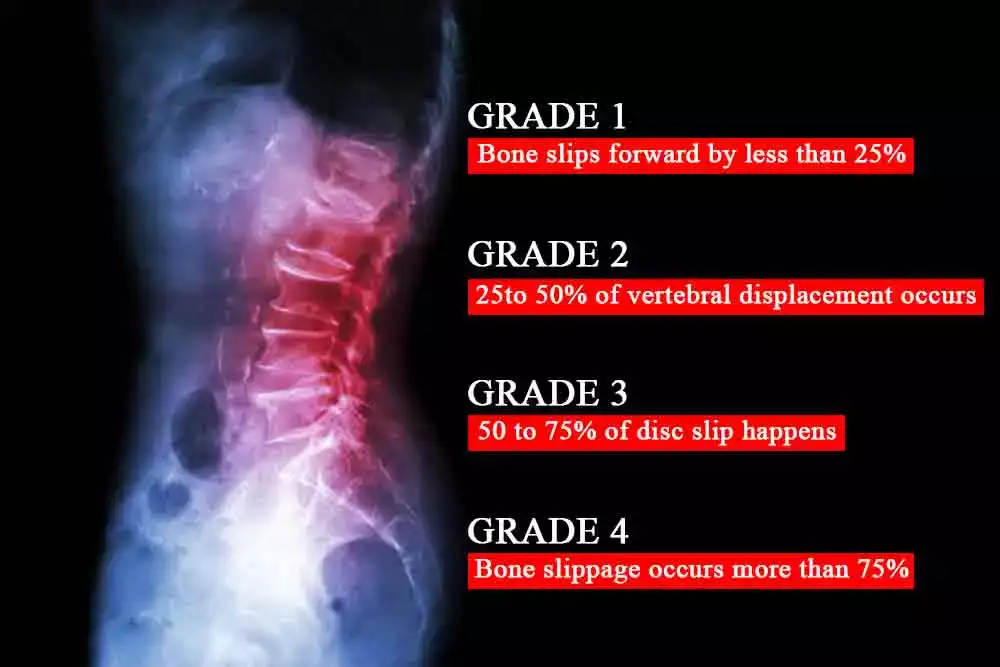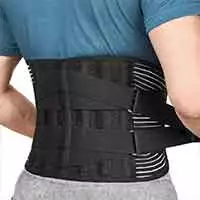How to Sit with Spondylolisthesis?
Spondylolisthesis has become a common health problem that affects almost 70-80% of people. It is a spinal disorder in which one of the vertebrae slips out of its normal place and becomes the reason for lower back pain.
Prolonged and wrong sitting position aggravates the pain due to additional strain in the lumbar region. Therefore, it is essential to maintain a right and healthy sitting posture to alleviate lower back pain.
Has your doctor diagnosed you with spondylolisthesis, and you are worried about how to sit with spondylolisthesis? Don’t look any further. We will guide you properly to achieve a good sitting position as an ergonomist and chiropractor.
Stick with our article to learn the best way to sit with spondylolisthesis.
What is Spondylolisthesis?
Spondylolisthesis is the condition in which one of the vertebrae from the vertebral column is displaced or slipped from its original position. Bone slippage occurs in any of the spinal bones, but usually, it occurs in the lower back.
Although it is painful to sit and stand for extended periods with this condition, but back stiffness can be relieved by adopting a proper sitting position and doing exercises. The disc slip occurs in four different grades.
- In grade 1, bone slips forward by less than 25%.
- In grade 2, 25to 50% of vertebral displacement occurs.
- In grade 3, 50 to 75% of disc slip happens.
- In grade 4, bone slippage occurs more than 75%.
So, from the above grading, grade 4 of backbone disorder is more severe than grade 1.
What Causes Spondylolisthesis?
The causes of spondylolisthesis may vary according to gender, age, genetics, and lifestyle. Infants suffer the spondylolisthesis condition due to congenital disabilities or injury. In aged people, vertebral displacement occurs because of arthritis, poor body posture, and repetitive spinal stretch. It also happens due to the wrong workout and accidents.
However, according to a survey, the main reason for vertebral slippage in most people is an over-extension of the spine. Females suffer more chronic lower back pain than males because of some hormonal and other factors.
Here are some common signs and symptoms of spondylolisthesis:
- Difficulty in standing, walking, or even sitting for a long period
- Weakness around the foot and legs
- Lower back pain and discomfort
- Pain in the upper back and neck
- Buttock muscle tightness
- Pain when bending over
- Leg and back stiffness
- Tight hamstrings
- Pain in the thighs
Generally, doctors diagnose this condition by MRI or X-ray imaging test. Besides the medications, physical therapy and right sitting posture are also important in spondylolisthesis disorder. In severe pain, physicians suggest surgery for treating the spondylolisthesis pain.
How to Sit with Spondylolisthesis?
Sitting in a proper posture may help relieve pain of people with spondylolisthesis. For instance, maintaining a neutral spinal position, using a supportive ergonomic chair, and avoiding slouching etc. All of this can allow you to enjoy a pain-free sitting experience. Let’s explore some of these ways of sitting:
Adopt a Neutral Spine Posture
A neutral spine sitting position is essential for sitting with a spondylolisthesis condition. Poor sitting posture aggravates back pain, especially when someone is continuously sitting in the wrong body position in front of the computer.
The best neutral sitting position is achieved when you maintain your spinal curve naturally in an S shape. This posture take pressure off the lower back containing the affected vertebrae, controlling pain.
You can sit in a neutral spine position by using the following postural guidelines:
- Make sure that your back is in a straight position during sitting.
- Place your feet flat on the floor or desk mat.
- Never cross your legs while sitting in an ergonomic chair.
- Maintain your arm position at 90 degrees with the desk.
- Avoid twisting or bending your body.
- Adjust the height of your seat.
- Sit in such a position in which your hips are tilted forward.
- Place a rolled-up towel on the backrest to sit comfortably with spondylolisthesis.
- Do not sit on a hard surface; use a seat cushion.
- Always use an ergonomic chair with an external pillow to support your lumbar spine region properly.
When you follow all these steps while sitting, you will feel a slight inward bend at spinal region, that is the lower side of your back.
Adjust Your Body Posture
Different neutral postures keep your spinal region in a healthy and neutral position. A good posture encourages the blood flow in the back. Below are some sitting positions that maintain a neutral back sitting postures:
- Reclined Sitting: Make sure that your lower back is in a slightly inward curve position by reclining the backrest at 100-110 degrees. Keep your back completely on the backrest of the chair.
- Declined Sitting: Sitting in a downward sloping angle is also a good neutral spine posture that shifts hips forward and drops the knees below the hip level. You can sit at a downward sloping angle at 20 degrees by using a forward tilt on the seat of the office chair or kneeling chair.
- Standing: Standing is the best and most natural neutral spine posture for lowering lower back pain. According to a survey, standing after every 15 minutes or switching between sitting and standing alleviates back pain by up to 54%.
Develop a Physical Therapy/Exercise Routine
Another excellent way to stop spondylolisthesis pain is to do exercises and physical therapy by consulting with the physical therapist. Regular exercises strengthen the back and abdominal muscles and reduce backbone discomfort. Research shows that the following exercises are best for pain relief and improving body posture in patients with spondylolisthesis.
- Core stabilization exercises
- Back muscle stretch exercises
- Lumbar flexion exercises
- Knee to chest stretch or lift
- Low impact exercises
- Dead bug exercises
- Hamstring stretch
- Pelvic tilt
- Swimming
- Cycling
Wear a Back Brace
A back brace is a great option for attaining spinal support when the vertebrae are out of alignment. Research shows that the back brace minimizes further vertebral slippage, reduces fatigue, lowers back pain, aligns the spine, and provides maximum lumbar support.
You can also prevent slouching and slouching by wearing a back brace.
Sit in an Ergonomic Chair
As the ordinary chair does not fully support the back, it is necessary to invest in an ergonomic office chair and standing desk. Ergonomic chairs offer a lot of great features, such as adjustable lumbar support, tilt control, adjustable footrests, adjustable armrests, and seat height. These features are helpful for backbone victims to sit comfortably, correctly, and pain-free.
Maintain a Healthy Weight and Lifestyle
If your body weight is more than the ideal body weight, the extra weight can also add strain or pressure to your spine and lead to back pain. Therefore, it is also necessary to maintain a healthy weight and lifestyle. Consult to a nutritionist for a healthy diet.
Final Thoughts!
We hope our guide has helped you understand how to sit with spondylolisthesis. There are many people who live pain-free with spondylolisthesis by avoiding poor posture, using an ergonomic chair, doing exercises, and taking painkillers.
You should sit up straight by ensuring that your shoulders are relaxed and legs are uncrossed. In the end, we will suggest you do not lift heavy-weight items and don’t perform high-intensity activities. If the back pain persists, consult your physician to manage the pain.










